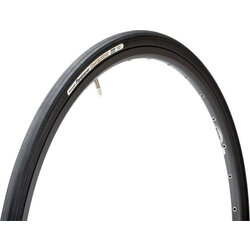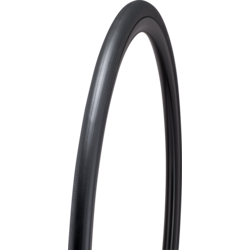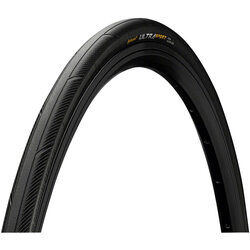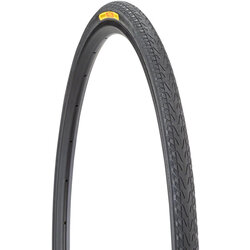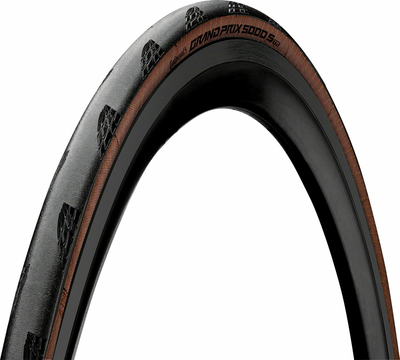How to Choose Bike Tires
Choosing the right cycling tires can be like trying to pick the right sandwich at your favorite local deli. In short, there are a TON of options and many factors to consider when choosing the right tire for your bicycle. Choosing the right tire is all about matching the tire with the riding conditions. Below we’ll break down everything you need to know to make an informed decision!
| Types of Tires | How to choose the right size? |
| Tubes & Valves | When to Replace |
| Tire Pressure Guidelines | Tire Tread Patterns |
When to Replace Bike Tires
It’s time to replace your tires when they stop giving back to you what you’re putting into them! In short, if your bike is starting to feel less active or responsive it’s probably time to check those tires. A few things to check for below.
Not holding air / Signs of dry rot anywhere / Worn past wear indicators
Sidewall damage / Missing treads or knobs / Any strange bulges in the tire
Bead damage / Squaring-off of the tire / Any embedded glass or other debris -
Types of Tires
| Road | Commuter | Gravel | Mountain |
Road
Road bike tires are made to provide maximum rolling efficiency. Beyond that, they also provide some comfort as well as some flat protection. Road tires generally come between 23mm and 32mm wide and sometimes have a flat prevention component as well. They generally have a slick texture to provide maximum efficiency but sometimes will have some grooves in them to push rain away to provide grip in wet weather conditions.
Commuter
Commuter or ‘hybrid’ tires are meant to provide a great riding experience when cruising around the neighborhood or along the local bike path. They come in many different shapes and sizes and the right size for you will depend on both your bicycles as well as your intended type of riding. Grab something with some knobs in it if you’re thinking about hitting some gravel roads, or run something slick if getting to work on time is your number one priority!
Gravel
Lots of options for the gravel rider to choose from but we will try and keep things simple. The slicker the tire the faster it will roll but the less traction it will have when riding ‘off piste’. Many manufacturers are coming out with ‘file tread’ tires which essentially have a smooth surface in the middle and grip on the sides. These are great when riding both on the road as well as some gravel. If cyclocross or mud bogging is your thing, going to want to get something with some big knobs on it for ultimate traction!
Mountain
Because mountain biking takes us to so many different places it is impossible to pick one tire that can do it all. Many mountain bikers switch their tires up depending on where they are riding or what type of riding they are doing. A few things to consider are size, tread pattern, casing, flat protection, and overall durability. Confused yet? No problem, give us a call and we’ll talk you through all the details!
How to choose the right size?
(most common options shown below)
| Road | Commuter | Gravel | Mountain | |
| Width | 23mm - 32mm | Varies | 32mm - 48mm | 2 inch + |
| Wheel Size | 700c | Varies | 700c or 650b | 26 / 27.5 / 29 |
| Tread | Slick | Grooved | File Tread or Small Knobs | Very Knobby |
Once you’ve gotten clear on what type of riding you are planning on doing and what style of tire you are going to need getting the size dialed in is the next part of the job. Two main things will come into play here, the diameter of the rim and the width your looking for. Remember also that even though the tire may fit on your rim we also need to make sure that it will fit in between your frame and fork. Disc brakes have made this much easier but tolerances can still get tight!
The diameter is the easiest part to figure out since there is no wiggle room. If there is already an old tire on your bicycles just look on the side of it and see what it says. The first number generally corresponds to the diameter. For example, if on the side of your tire it reads 700 x 25mm then your rim is a 700c rim. You may also be able to find this size on your rim which is another great place to start.
Tire width is where the simplicity stops. Let’s just say you’ve got a road bike that came with a 700 x 25mm tire and you are looking for more comfort. Well, at the bike shop we may recommend a 700 x 28mm tire but it isn’t guaranteed to fit. We would have to install that tire on your rim to make sure it would clear the frame still. It is important to consider what effect different tire widths will have on your overall cycling experience. The wider the tire the higher volume it will have which means you can run it at lower pressures to gain a larger contact patch with the ground which translates into more traction. The trade off is that the larger contact patch will add rolling resistance which could slow you down.
Tubes and Valves
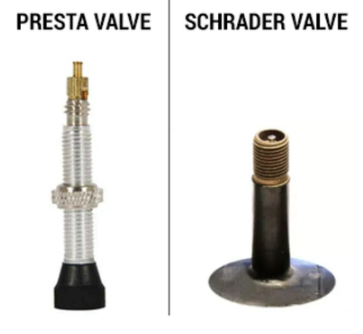
Ok ok we know this is supposed to be all about tires but we couldn’t help ourselves. The tube is a critical component to tire selection and these things have to match! First thing you will want to do is match up the diameter and width. Next you’ll want to make sure that your tube has the correct valve on it. Two options here, presta or schrader. Your car has a schrader valve on it, its the chunkier of the two, and generally comes on youth and entry level bicycles. Presta is the thinner option of the two and generally comes on more performance road or mountain bikes. Tubeless valves we’ll save for another day.
Tire Pressure Guidelines
As a general rule you want to have your tire pressure set up between the min / max recommendation given on the side of your tire. After that, tire pressure can turn into an artform. First thing you will want to make sure you have is a floor pump with a gauge you can trust. It’s not common knowledge that your tubes slowly leak air over time if they don’t have a hole in them but that is true. For youth or hybrid bikes make sure you are pumping your tires up once a week. For road or mountain bikes you should be checking your pressure every time you ride.
Now if we may . . . tire pressure is a personally opinion but we definitely have some opinions! As cyclists we’re constantly trying to optimize ride quality, speed, and traction and our tire pressure plays a HUGE role in this. It’s going to take some experimenting and some trial and error but with some work you will be able to find the perfect pressure for you. The basics are that the lower the pressure you run the more traction you will have, the more comfortable your bike will be, but the slower it will go. The higher pressure you run will provide more speed but less comfort and traction. Now that being a said a tire that is just too under inflated will actually be out of control at a certain point and a tire thats pumped up to the tip top will actually start to get a little slower but the finer details are a topic for another day. Want to chat more about bike tires and air pressure?
Tread Patterns
Although there are as many tread pattern styles as there are Ben & Jerry’s ice cream flavors we certainly have our own ‘cherry garcias’ if you know what we’re sayin’! A couple of our favorites are . . .
Road: Continental Grand Prix 5000
Hybrid: Specialized Trigger Sport
Gravel: Panaracer Gravel Kings
With that said there are a few things that are worth noting. The knobs or lugs on the side of the tire are there to help grip into a corner on softer surfaces. The bigger the knob, the softer the terrain it’ll grip into. The pattern on the top of your tire is really meant to help provide traction when speeding up or while braking. Reminder that ‘file tread’ or ‘smooth on top and knobby on the side’ tires are meant for riders that are splitting time between gravel roads and the tarmac and are a great option for all around riding or even commuting BUT they sometimes have a dead spot in the middle when transferring from one side of the tire to the other.
Ok we hope you enjoyed reading this Tire Guide as much as we enjoyed writing it. That said, there isn’t enough space on our hard drives to get out everything there is to know about tires. Remember to take your time when buying a tire and that you may not get that perfect tire on your first go around.

